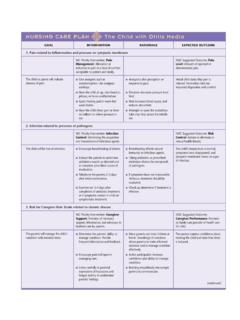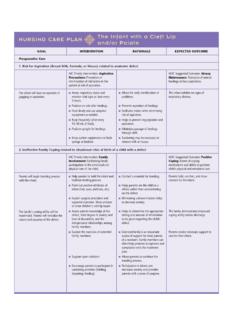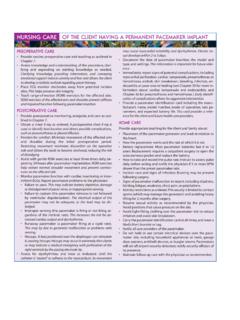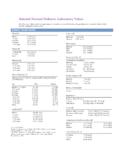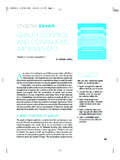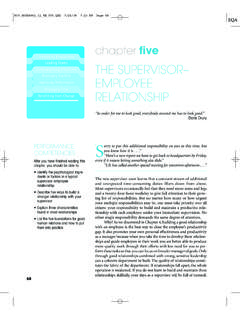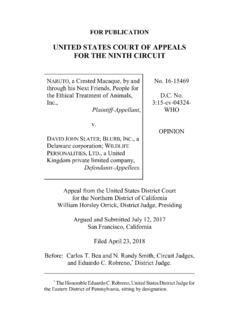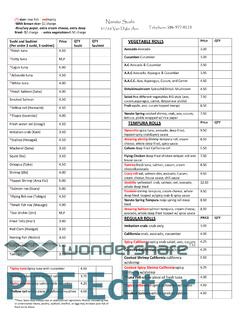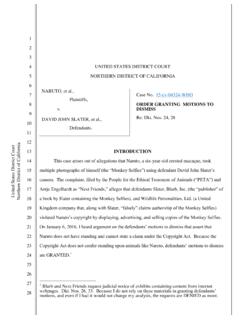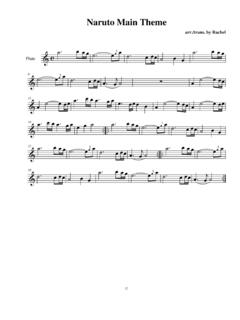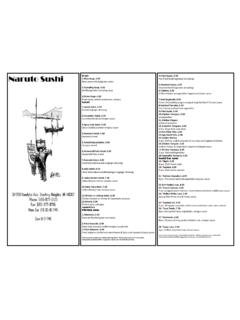Transcription of Chapter 4: Creating the Empire, 1660-1720
1 21 Chapter 4: Creating the Empire, 1660-1720 OverviewDuring the first half of the seventeenth century, England s colonies developed without any realgovernmental plan or control. Colonies were private ventures with charters from the British government but nothingcame in the way of supervision of support because of political turmoil in Great Britain. When the chaos over themonarchy was resolved, Britain had been transformed into a constitutional monarchy in which the crown andParliament jointly ruled. The British state became stronger and more centralized. The economic theory ofmercantilism guided Britain s economic development and was implemented in the Navigation Acts (1651-1696).
2 Inthe absence of strict British control new colonies, such as New Netherland, Pennsylvania, and South Carolina, weredeveloped in the second half of the seventeenth century, each in a different manner from the others. The mostsuccessful offered opportunity and religious toleration to its colonists. By the end of the seventeenth century,Virginians lived through a rebellion designed to secure economic opportunity and a legitimate government thatwould protect that opportunity and Virginia had developed into a slave society complete with laws regulating slavebehavior and protecting an owner's rights to his property. In Massachusetts the Puritans lost control of their had to contend with prosperity, conflicts with their neighbors, and the region s deadliest Indian war known asKing Philip's War.
3 In 1692 twenty people were executed who had been convicted of witchcraft. As Britain regainedpolitical stability at the end of the seventeenth century she tried to gain some control over her colonies. She wasalso more confident that she could challenge France for world supremacy. Between 1689 and 1713 Britain foughttwo wars against France and her allies. Of the three European nations with colonies in the New World, Britain wasthe only nation to have a substantial presence in America north of the Rio Grande. The French and Spanish bothmaintained outposts but these had not become thriving colonies vital to their nation s economy. More than anythingthey functioned as military outposts to keep other nations out of the region.
4 The Spanish focused their attentions onMexico and Latin America while settlements in New Mexico and Florida languished. For the French the WestIndies were valuable possessions; not so much Quebec and Louisiana. Spain s settlement at St. Augustine, Floridawas intended to be a self-supporting military outpost. It never developed to that extent and more than once theSpanish thought about abandoning it and in 1763, at the end of the French and Indian War, Spain abandoned itsFlorida colony. Its colony in New Mexico was the location of the only successful Indian revolt in North America,the Pueblo Revolt. The Pueblos held off the Spanish for thirteen years but in 1696 Spain reconquered New s settlements in New Mexico were always Topics The information in Chapter 4 introduces your students to the following key topics.
5 Britain s plan for empire, and the effect of the English Revolution, Restoration, and the GloriousRevolution on the colonies New patters established by the colonies founded in the second half of the seventeenth century Political instability in most of the American colonies including Spain s colony of New Mexico The conflict between the role envisioned for Indians in the British empire and the ambitions of colonialsettlers in Virginia and New England The Salem witchcraft trials as an expression of tensions in late seventeenth century Massachusetts The distinctive society of New MexicoChapter OutlineTituba Shapes Her World and Saves HerselfThe Plan of EmpireTurmoil in EnglandThe Political Economy of MercantilismNew Colonies.
6 New PatternsNew Netherlands Becomes New YorkDiversity and Prosperity in PennsylvaniaIndians and Africans in the Political Economy of CarolinaThe Barbados Connection22 The Transformation of VirginiaSocial Change in VirginiaBacon s Rebellion and the Abandonment of the Middle GroundVirginia Becomes a Slave SocietyNew England Under AssaultSocial Prosperity and the Fear of Religious DeclineKing Phillip s WarIndians and the EmpireThe Empire StrikesThe Dominion of New EnglandThe Glorious Revolution -- in Britain and AmericaThe Rights of EnglishmenConflict in the EmpireMassachusetts in CrisisThe Social and Cultural Context of WitchcraftWitchcraft at SalemFeature: The Supernatural on TrialWitchcraft at SalemThe End of WitchcraftFrench and Spanish OutpostsFrance Attempts an EmpireThe Spanish Outposts in FloridaConquest, Revolt, and Reconquest in New MexicoThe Conquest of Pueblo SocietyThe Pueblo RevoltReconquest and the Creation of Spanish Colonial SocietyConclusionAnnotated Chapter outline with review questionsTituba Shapes Her World and Saves Herself: Either a Yoruba from Africa or an Arawak Indian fromGuyana, the woman Tituba, was accused of practicing witchcraft in Salem, Massachusetts, in 1692.
7 She had spenther life working on sugar plantations in the Caribbean and as a household slave in Massachusetts before movingwith her owner and his family to Salem. What might have been nothing more than a young girl s parlor game, anold folk custom of trying to see the future in the white of an egg dropped into a glass of water., Tituba got caught upin a hysterical witchcraft scare -- one in which she was accused of practicing witchcraft. The charge was a capitaloffense. In order to save herself, Tituba created a fanicful tale of hairy beasts, flying to Boston on a broomstick, andcovenants with the Devil. Her descriptions of events reflect her experiences in several different cultures and reflecta strong personal survival instinct.
8 She told the magistrates what they wanted to hear in order to save herself. Herstory is a story of cultural mixing and Plan of Empire: During the first half of the seventeenth century, England s colonies developed withoutany real governmental plan or control. Colonies were private ventures with charters from the British governmentbut there was nothing in the way of supervision or support. The reason for this neglect was the Glorious it was over, Britain had been transformed into a constitutional monarchy in which the crown and Parliamentjointly ruled. The economic theory of mercantilism guided Britain s economic development. The theory of mercantilism holds that nations require vast amounts of money to support their needs.
9 It holds that money is a finite commodity -- one country s gain is another s loss. In order to implement mercantilism and to regulate the colonists trade, Parliament passed the NavigationActs (1651-1696). Mercantilism held that the colonists were to provide the raw materials; manufacturers back home made thefinished Mercantilism also held that if the colonists came to manufacture things that competed with manufacturersback home, those colonial industries were restricted (see the Hat Act and Wool Act). What was Britain s plan of empire? What role were the American colonies supposed to play in it?New Colonies, New Patterns: In the absence of strict British control new colonies developed in the secondhalf of the seventeenth century.
10 New Netherland, Pennsylvania, and South Carolina were developed, each in adifferent manner from the others. The most successful offered opportunity and religious toleration to its colonists. Britain cut the Dutch trade, became the primary slave trader, and moved to take New Netherland and in1665 New Netherland became New York. However, feudal land policies and a failure to restore self-government kept potential colonists out of New York despite the promise of religious freedom. Pennsylvania demonstrated the potential of a colony that offered both religious toleration and economicopportunity. Chartered in 1661 by the Quaker William Penn, colonists were promised self-government,freedom of religion, and reasonably priced land which had been bought from its Indian owners.

